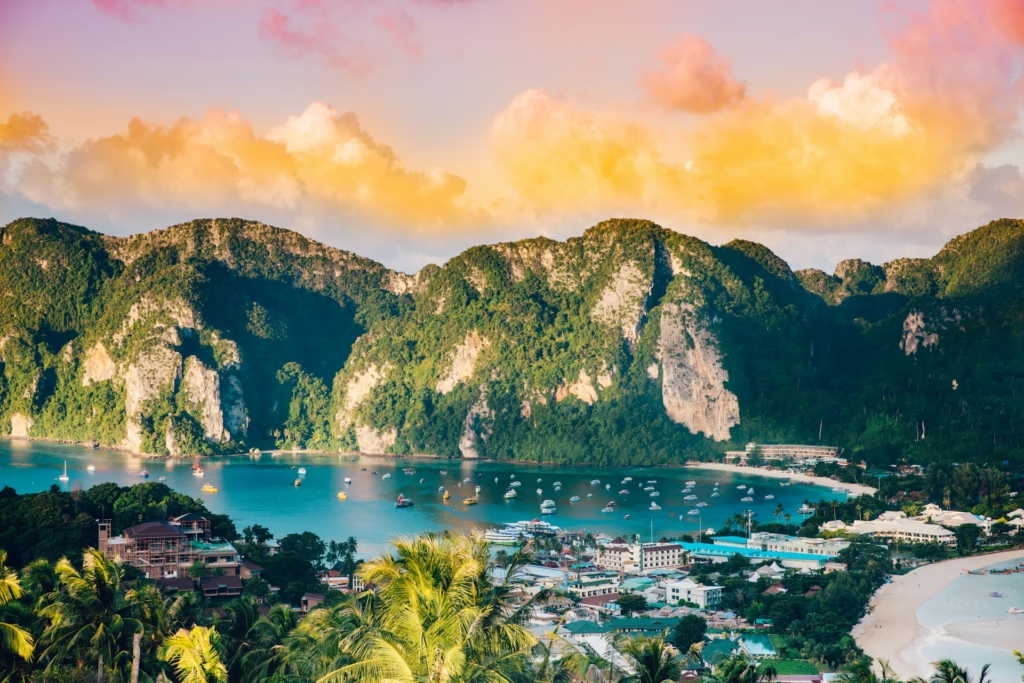
Thailand is one of the easiest places in the world to travel on a budget—if you know what you’re doing.
While it’s famous for cheap and delicious street food and budget friendly hostels, the real savings come from smart choices most travelers overlook.
From avoiding tourist traps to using local transport apps and booking tricks that shave off 30% or more, this guide is packed with real tips that stretch your baht without cutting the experience short.
Whether you’re backpacking through Chiang Mai or beach-hopping in the south, these budget travel tips will help you spend less and travel longer—no sacrifice, no stress.
1. Stay in Stylish Hostels for Under $15
Forget dingy dorms—Thailand’s hostel game is strong. Many offer private rooms, Instagram-worthy interiors, and even extras like rooftop lounges, coworking spaces, or free breakfasts.
In Bangkok, The Yard Hostel gets consistent praise for its chill vibe and eco-friendly design.
In Chiang Mai, Stamps Backpackers is loved for its social atmosphere and clean facilities.
👉 You can easily find these gems through TripAdvisor or Agoda—just filter by “hostel” and sort by guest rating..
Klook.com2. Use Overnight Buses and Trains to Save on Hotels
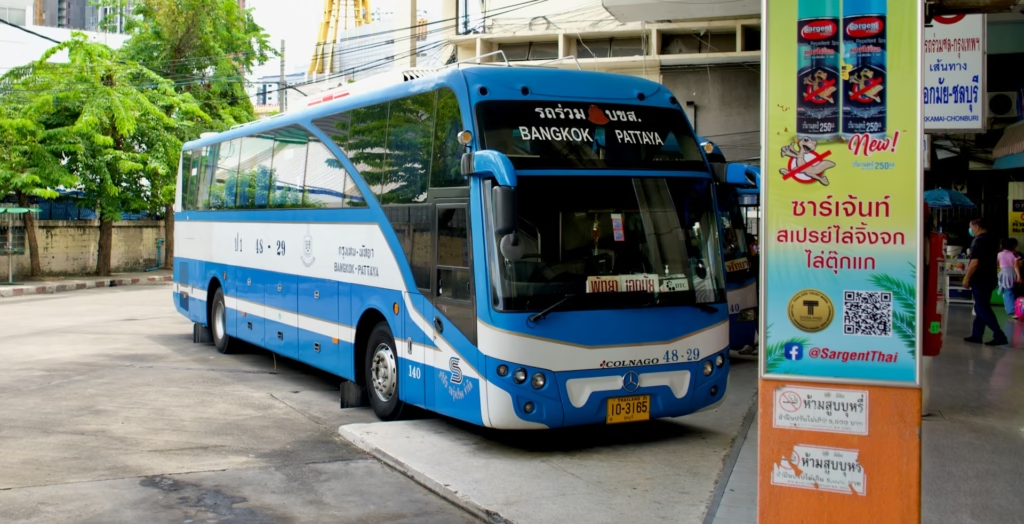
Night buses and sleeper trains are budget gold: you save a night’s accommodation and cover transport at the same time.
Popular routes like Bangkok to Chiang Mai or Surat Thani (gateway to the islands) offer air-conditioned sleeper cabins, reclining seats, and decent onboard restrooms.
🎟️ Book in advance through 12Go Asia to compare operators, departure times, and real traveler reviews in English. It’s cheaper than flying and a true backpacker classic.
3. Search Agoda & TripAdvisor Together
Agoda often shows the lowest rates, especially for budget hotels and hostels, while TripAdvisor gives you real user reviews, photos, and direct booking links.
Checking both takes two minutes—and can save you 20–30% on stays.
📱 Agoda also offers exclusive mobile-only deals—so download their app before you book. For even better pricing, log in to unlock “VIP” discounts.
4. Stay Just Outside the Tourist Zones
Want the same beach or city access at half the price? Avoid the hotspots by just a few kilometers.
In Phuket, Rawai is cheaper and more local than Patong. In Krabi, Ao Nam Mao offers quieter beaches and guesthouses at a fraction of Ao Nang prices.
🔍 Use TripAdvisor’s map view to search stays just outside the main zones. You’ll spend less and get a more authentic experience.
5. Book Longer Stays and Ask for Discounts
Many small hotels and guesthouses offer off-platform discounts if you stay 3+ nights. These deals often aren’t listed online—especially in laid-back towns like Pai, Koh Tao, or Chiang Rai.
💬 Once you find a place on TripAdvisor or Agoda, contact the property directly to ask about weekly rates. You’d be surprised how often they say yes—especially outside peak season.
6. Eat Where the Locals Eat—Not Where the Menu Has Pictures
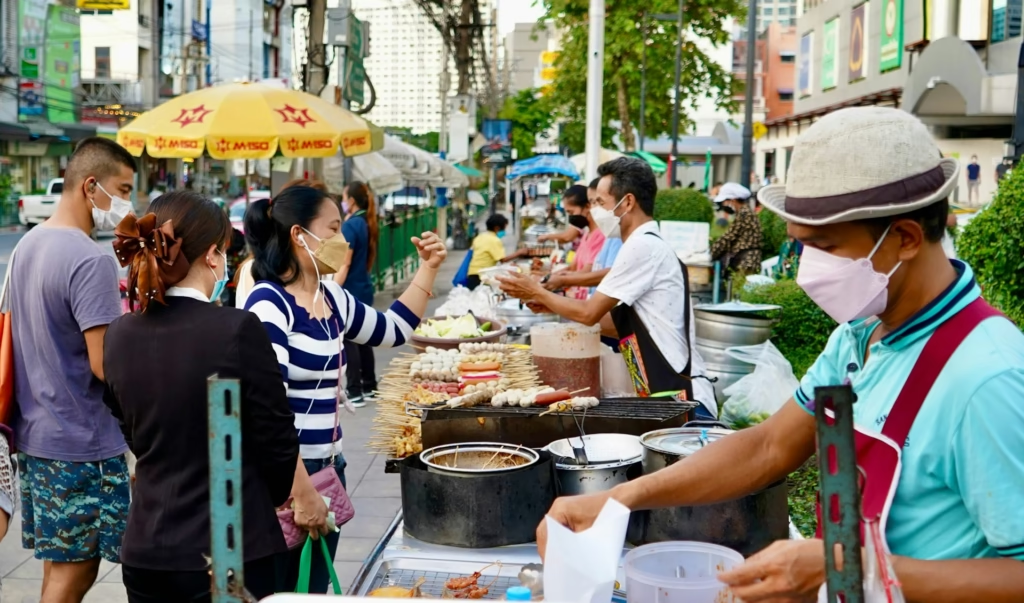
If the restaurant is packed with locals (especially during lunch hours), it’s probably cheap, clean, and delicious.
If it has English-only signs, laminated photos, and empty tables… keep walking. Street stalls and shophouse eateries serve authentic Thai meals for 40–80 THB (about $1–2.50 USD).
Try pad kra pao, khao man gai, or grilled skewers with sticky rice for flavor and value.
👉 Check TripAdvisor’s “cheap eats” filter to find high-rated budget spots nearby.
7. Go to Night Markets for the Best Variety & Prices
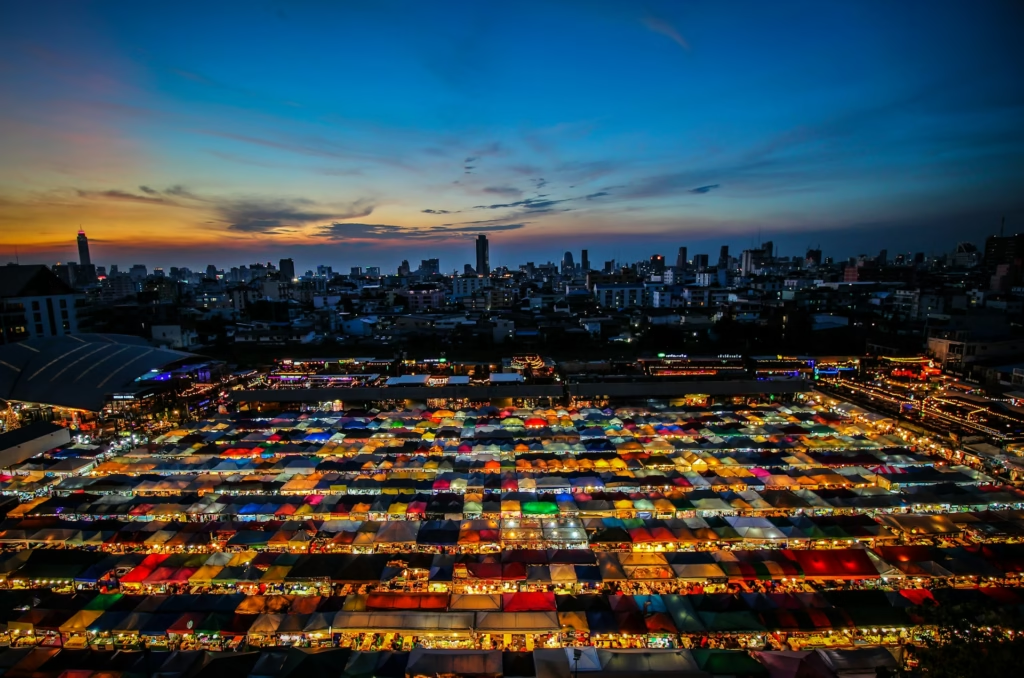
Night markets aren’t just tourist attractions—they’re a food-lover’s dream. You can try multiple dishes for the price of one sit-down meal.
Dishes like mango sticky rice, papaya salad, and Thai pancakes often cost less than 50 THB each. Popular markets like Chiang Mai’s Sunday Walking Street or Phuket Weekend Market are wallet-friendly and fun.
📍 Use Google Maps or TripAdvisor to check hours and reviews before going.
8. Carry Small Bills & Pay in Cash
Most budget food spots and street vendors don’t accept cards, and they may not break large notes.
Carry 20s, 50s, and 100 THB bills for hassle-free transactions. This also helps you keep better track of your daily food spending—cash is easier to manage than swiping.
🪙 Bonus: Avoid high ATM fees by withdrawing larger amounts less frequently.
9. Don’t Skip 7-Eleven
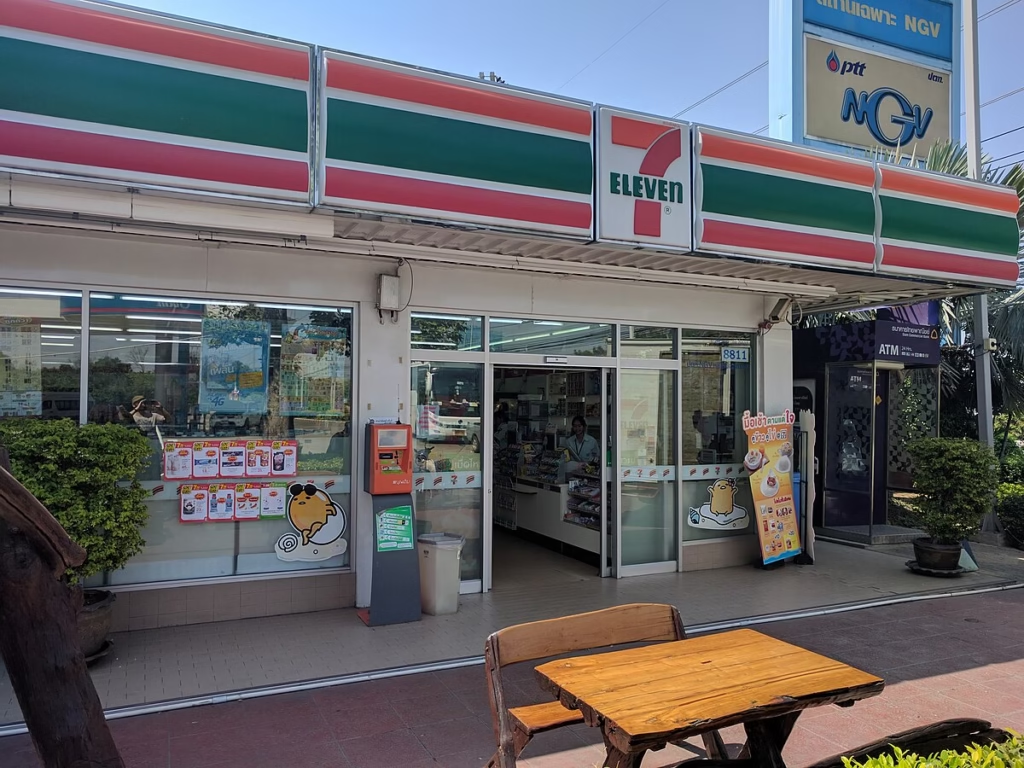
It’s not just a convenience store. Thailand’s 7-Elevens are stocked with cheap, tasty meals like microwave Thai curry rice (30–50 THB), fresh toasties, and even iced coffee. When you’re traveling by bus or train, a 7-Eleven stop can save you from overpriced station food.
💡 Pair this with bottled water or soy milk and you’ve got a meal under 60 THB.
10. Bring a Reusable Water Bottle with Filter
Bottled water may be cheap, but buying 3–4 a day adds up. Instead, bring a reusable bottle with a built-in filter like GRAYL or LifeStraw. It’s good for your wallet and even better for the environment—especially on the islands where plastic waste is a major issue.
🛒 You can find these on Amazon or pick up a basic one from 7-Eleven or Tesco Lotus in Thailand.
11. Book Trains, Ferries, and Buses with 12Go Asia
Skip travel agency markups and language barriers—use 12Go Asia to book almost all intercity travel: trains, buses, vans, and ferries.
You can compare routes, check reviews, and lock in a seat without needing to haggle. It’s especially useful for sleeper trains, island transfers, and combo tickets like ferry + minivan to Koh Tao.
🚌 Book in advance for popular routes like Bangkok → Chiang Mai or Krabi → Koh Samui.
12. Use Local Buses and Songthaews Instead of Taxis
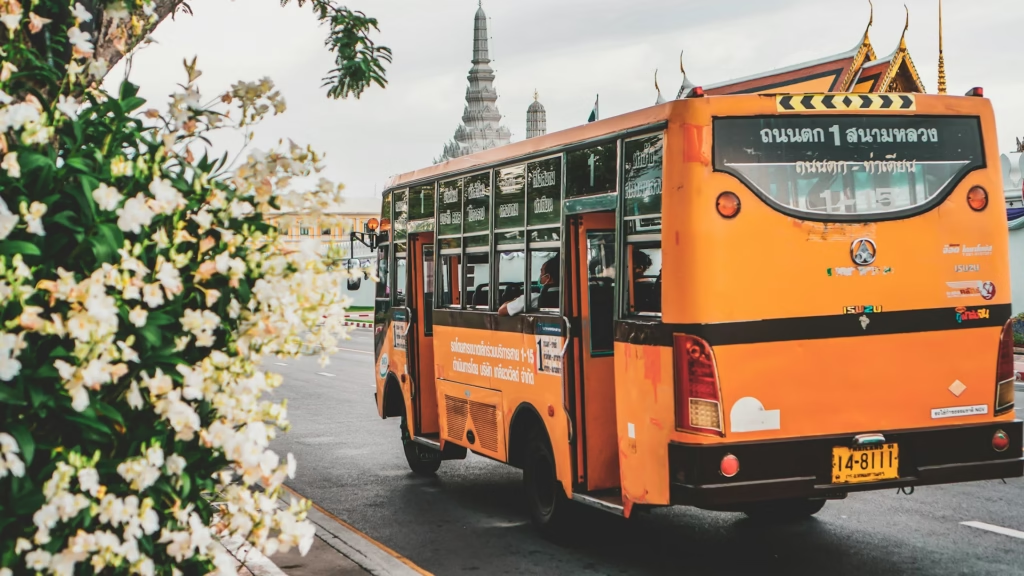
In most cities, taxis will cost you way more than local transport—and many won’t use the meter. Instead, hop on a songthaew (red pickup truck taxi) in Chiang Mai or local buses in Bangkok for 10–30 THB. They follow fixed routes, and you’ll blend in with locals.
🚨 Tip: In Bangkok, the BTS Skytrain and MRT subway are super clean, safe, and budget-friendly.
13. Use Grab or Bolt Instead of Hailing Taxis
If you must take a taxi, use Grab or Bolt—rideshare apps that show exact fares before you book. This eliminates scams, language confusion, and the classic “broken meter” excuse. Bolt tends to be cheaper than Grab in major cities like Bangkok or Chiang Mai.
📱 Always check both apps before booking—they often show different prices.
14. Rent a Scooter for Island Travel (If you know how to ride one and have the appropriate license)
On islands like Koh Lanta or Koh Tao, the easiest and cheapest way to get around is by scooter. Rentals go for 150–250 THB per day, and fuel is very cheap. Just be sure to:
- Wear a helmet
- Take photos of the bike before riding
- Avoid renting if you’ve never driven one or don’t have the correct license – accidents are very common
🛵 Skip tourist “scooter tours” and explore at your own pace.
Klook.com15. Walk More—You’ll Save and Discover More
This one’s obvious but underrated. Many Thai towns and beach areas are small enough to walk around, yet travelers still overspend on tuk-tuks or short rides.
Walking not only saves money—it helps you discover street food stalls, quiet temples, and unexpected photo ops you’d miss otherwise.
👣 In Chiang Mai, Pai, or Ao Nang, walking is often the best option anyway.
16. Visit Temples—Most Are Free or Donation-Based
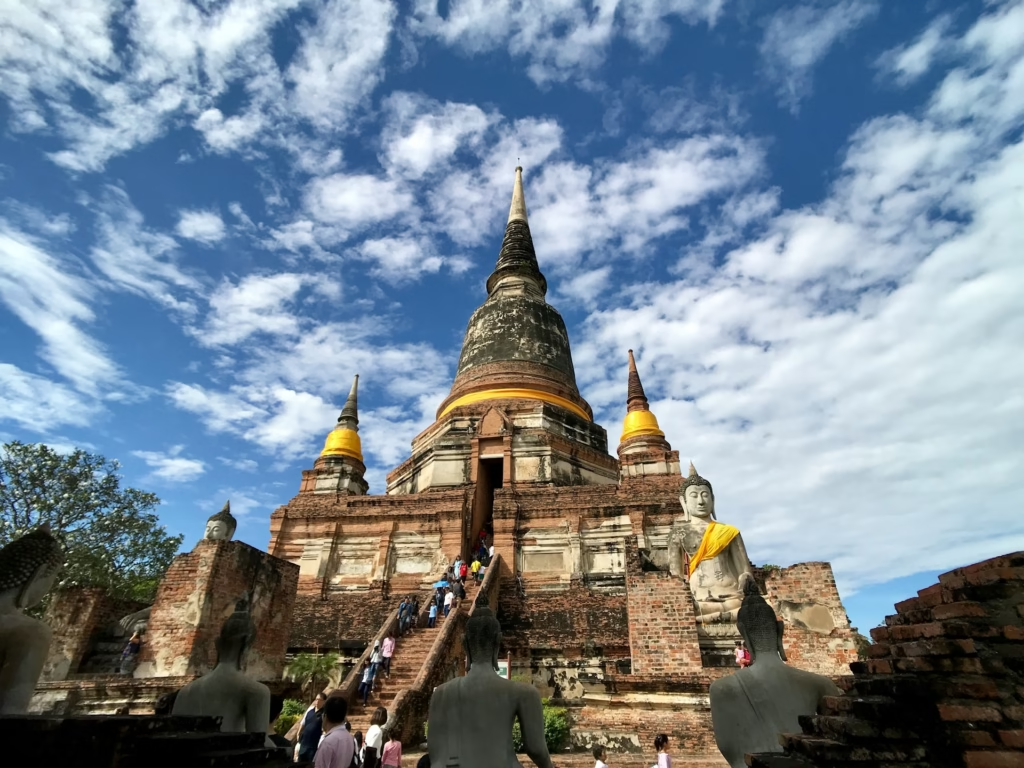
Thailand’s temples are beautiful, peaceful, and culturally rich (without being a budget-buster).
In Bangkok, Wat Saket and Wat Ratchanatdaram are free, while others like Wat Pho cost just 100 THB.
In Chiang Mai, you can easily see 10+ stunning temples on foot without paying a baht.
🙏 Just remember: dress modestly, remove your shoes, and speak quietly inside.
17. Watch the Sunset—It’s Always Free
Some of the best views in Thailand are completely free. Watch the sun dip over the mountains in Pai, behind the limestone cliffs in Railay, or across the Chao Phraya River from Bangkok’s Tha Maharaj pier. No booking required—just show up with a camera or coconut in hand.
📍 Look for “sunset viewpoints” on Google Maps to find locals’ favorite spots.
18. Explore Local Markets (Even If You Don’t Buy Anything)
Markets like Chatuchak in Bangkok, Warorot in Chiang Mai, and smaller local ones in Krabi or Surat Thani are full of color, flavor, and people-watching opportunities. It’s free to enter, and you can stroll for hours absorbing sights and smells.
🛍️ If you do buy something, it’ll probably cost less than $2—perfect for souvenirs or snacks.
19. Hike to Waterfalls or Viewpoints
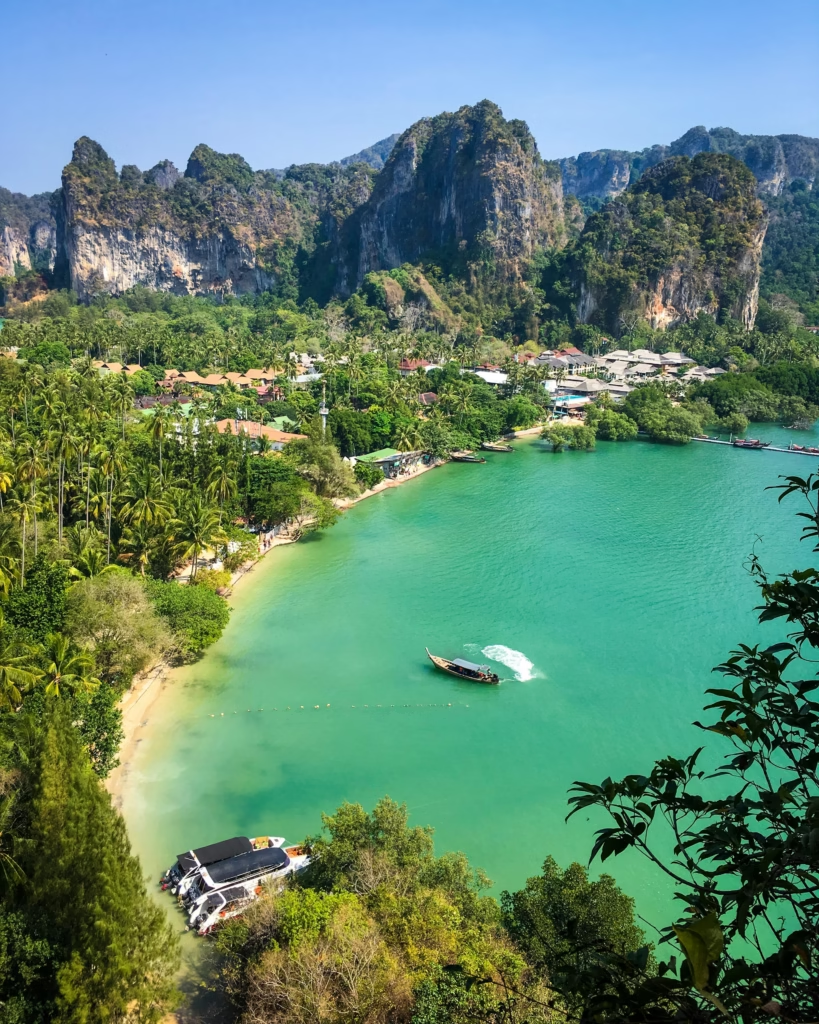
In northern Thailand, hiking trails lead to stunning waterfalls, hill tribe villages, and panoramic viewpoints—all for free. In places like Doi Suthep–Pui National Park, entry is low-cost or free, and the scenery is spectacular.
🥾 Always bring water, and check if a guide is required (some parks suggest one for safety).
20. Visit Public Beaches (Skip the Beach Clubs)

Most of Thailand’s beaches are public and free—you don’t need to pay for a daybed at a beach club to enjoy the ocean.
In places like Koh Lanta, Koh Phayam, or Khanom, the beaches are wide open and uncrowded. Bring your own towel, grab a coconut for 30 THB, and enjoy the same view the resorts charge hundreds for.
🌊 Bonus tip: Some “hidden” beaches are only accessible by scooter or a short hike—worth the effort.
21. Use ATMs Strategically (Avoid Fees When You Can)
Most Thai ATMs charge a 220 THB (~$6 USD) withdrawal fee—per transaction.
To minimize this, withdraw the maximum limit per transaction (usually 20,000 THB) and use cards with no foreign transaction fees like Wise, Revolut, or Charles Schwab.
💳 Also avoid currency conversion offers (“Do you want to be charged in your home currency?”)—always decline and choose THB.
22. Use a Travel-Friendly Debit or Multi-Currency Card
Cards like Wise or Revolut let you hold and spend in THB, track spending in real time, and often have better exchange rates than banks. They also help avoid carrying lots of cash—handy for safety and budgeting.
📲 You can order them online before your trip and top up from your regular bank.
23. Bargain (Respectfully) at Markets and with Tuk-Tuks
Haggling is expected at markets, especially for souvenirs or clothing. A good rule: offer 30–40% less than the asking price, then work your way up.
Be friendly and smile—locals are more likely to cut you a deal if you’re polite.
🛺 For tuk-tuks, negotiate price before getting in. If it feels too high, walk away.
Klook.com24. Track Your Spending (Even Roughly)
It’s easy to lose track when you’re spending 50–100 THB at a time.
Use a budget app like TravelSpend or just keep a daily note on your phone. Even rough tracking helps you spot where you’re overspending—and gives peace of mind.
📆 Many travelers aim for ~$30–40 USD/day. With smart moves, it’s doable.
25. Set a Daily Cash Limit (and Stick to It)
Withdraw what you need for 3–4 days, split it into daily envelopes or wallet sections, and try to stick to it.
Physically seeing your remaining cash keeps spending in check better than cards. It also gives you the freedom to splurge a bit some days and save on others.
Final Thoughts
🧠 Bonus: Leave your backup card and passport in your accommodation safe when out exploring.
Traveling Thailand on a budget doesn’t mean cutting corners—it means traveling smarter.
With the right tips, you can explore temples, islands, street markets, and jungle hikes without breaking the bank.
These 25 budget travel tips for Thailand are designed to help you save where it counts, so you can stay longer, experience more, and enjoy every baht you spend.
Whether you’re planning a short getaway or a long backpacking trip, this guide will help you make the most of your money—and your time.
Klook.comImage Credits
- Phi Phi Island: Photo by Evan Krause on Unsplash
https://unsplash.com/photos/aerial-photography-of-body-of-water-surrounded-with-mountains-BU6lABNbTpA - Bus: Photo by ThaimaaOpas on Unsplash
https://unsplash.com/photos/a-blue-bus-parked-on-the-side-of-a-street-TqvPHR6YvGw - Street food vendor in Bangkok: Photo by ThaimaaOpas on Unsplash
https://unsplash.com/photos/a-group-of-people-standing-around-a-table-with-food-on-it-fRirhKTvCiQ - Chatuchak Market: Photo by Florian Wehde on Unsplash
https://unsplash.com/photos/aerial-photography-of-city-buildings-during-night-time-fwtPzBjW-A0 - Bangkok bus near the Grand Palace: Photo by David Gardiner on Unsplash
https://unsplash.com/photos/a-bus-travels-down-the-street-IqcEBas2Sl0 - Temple at Ayutthaya: Photo by Rin T on Unsplash
https://unsplash.com/photos/yellow-and-brown-structure-TNUUxnSMB44 - Koh Phangan Beach: Photo by John Mukiibi Elijah on Unsplash
https://unsplash.com/photos/brown-wooden-fence-on-seashore-during-daytime-Yspt0MQlhmA - 7-Eleven, Thailand: Wikimedia Commons
https://commons.wikimedia.org/wiki/File:7-Eleven_by_the_side_of_route_340_south_of_Suphan_Buri.jpg
